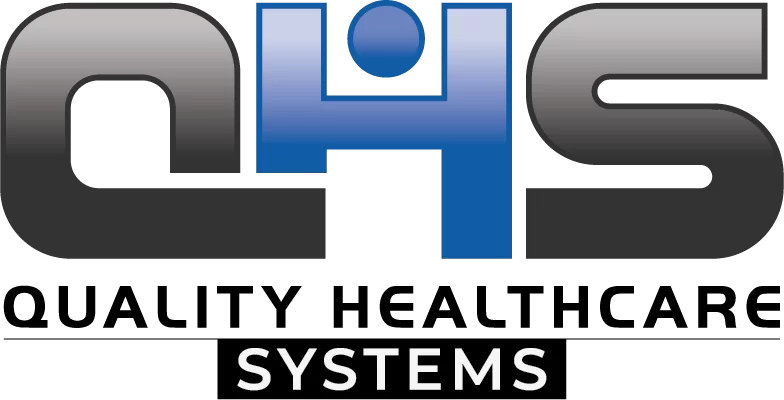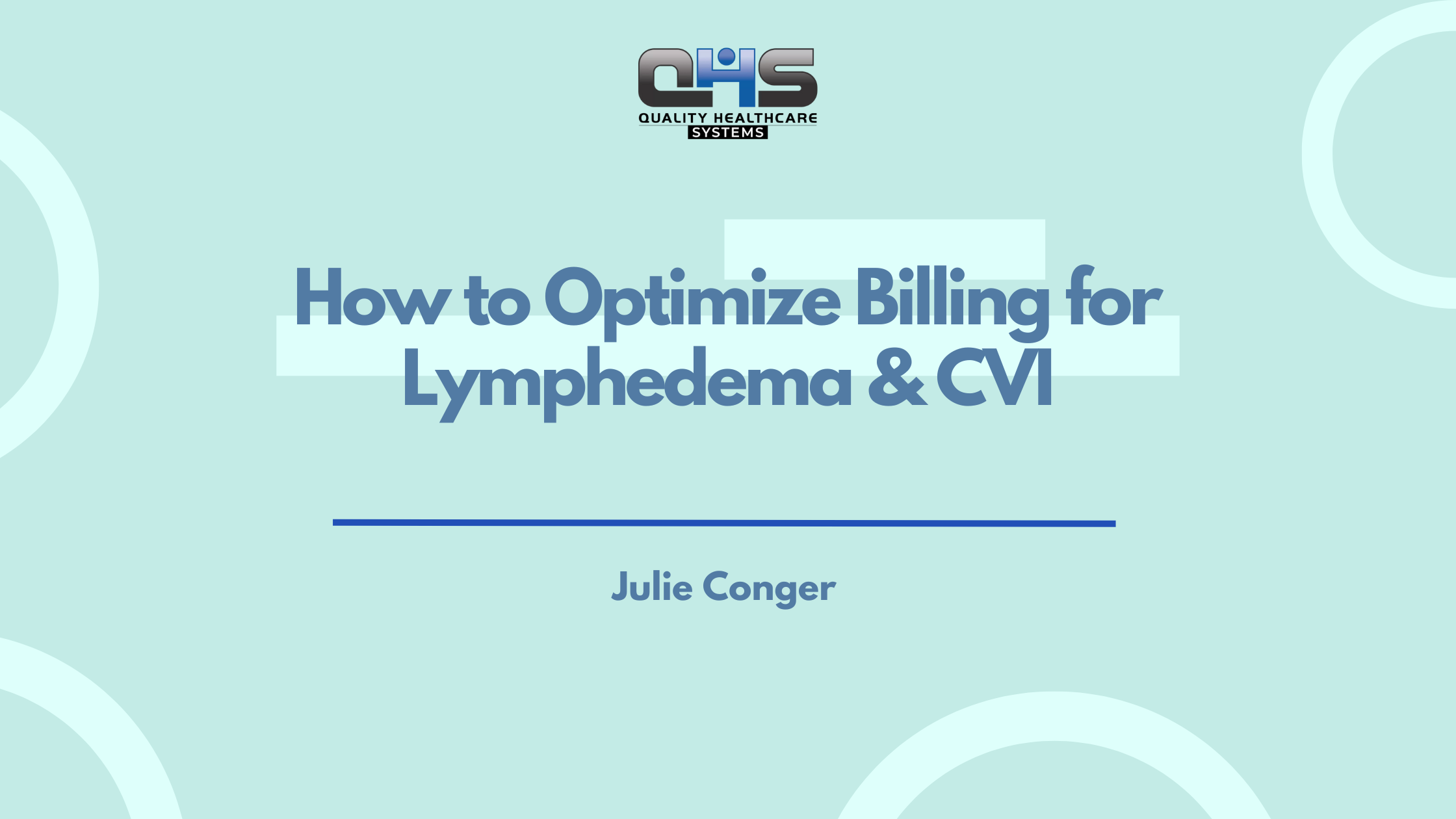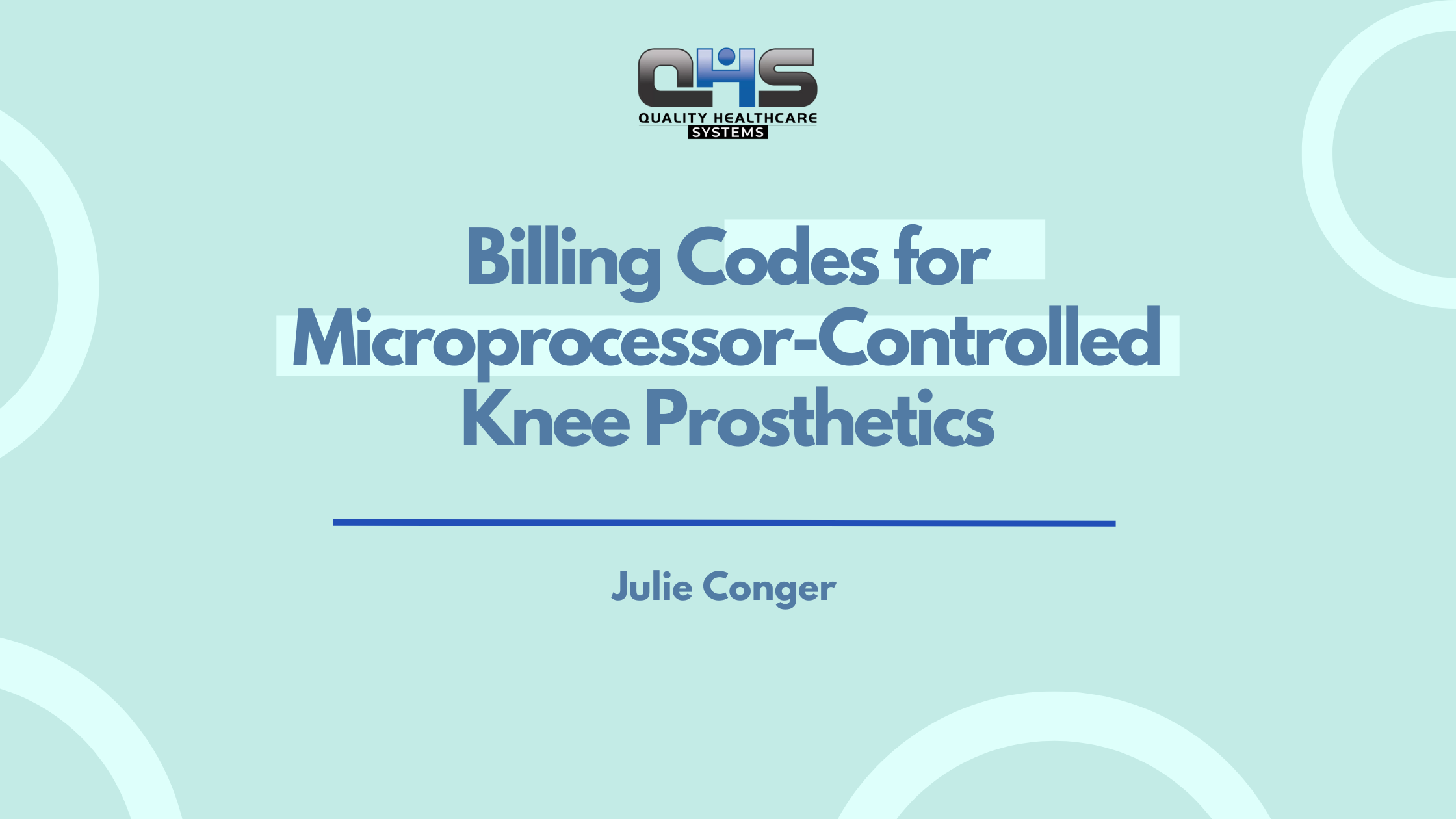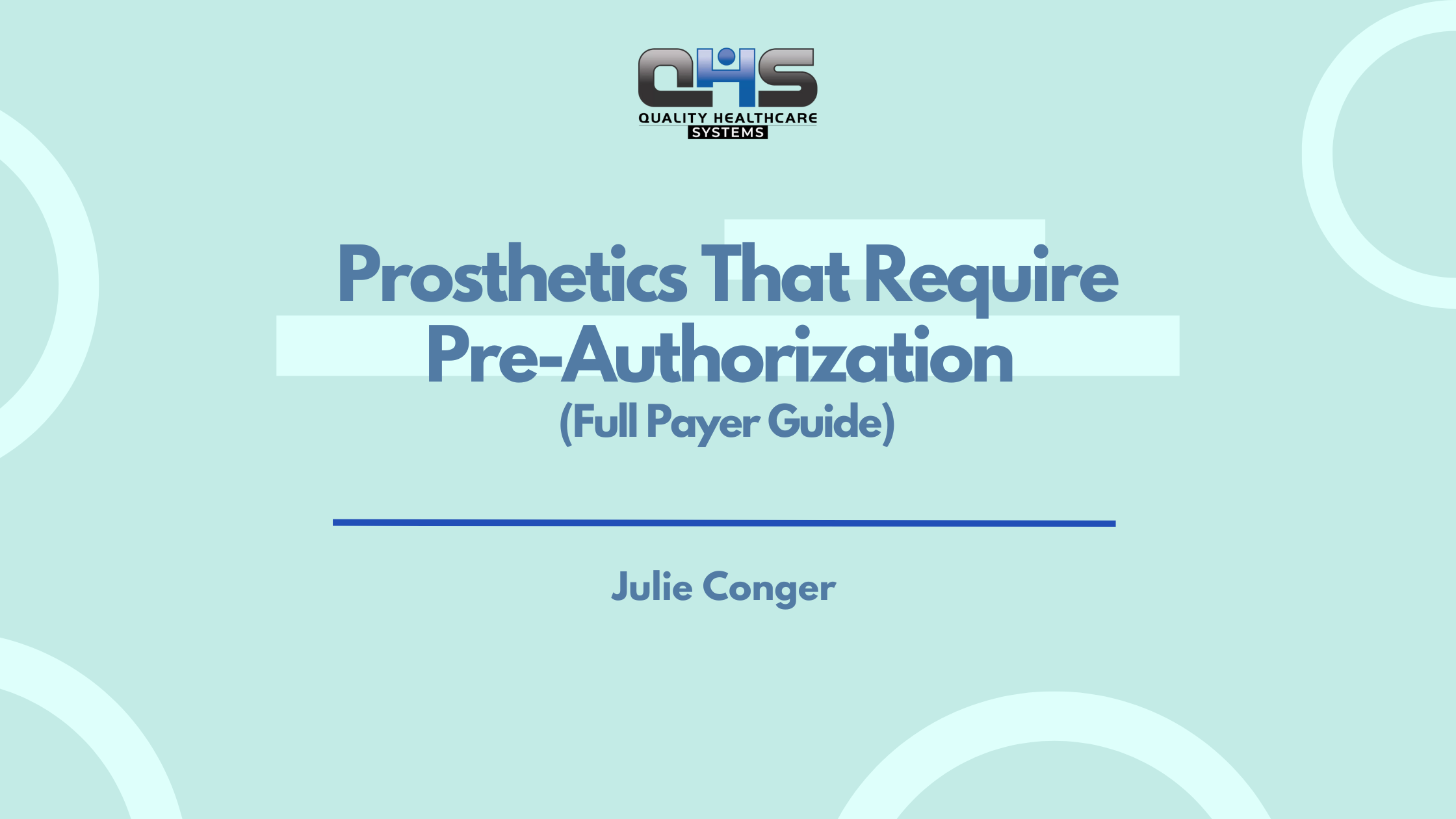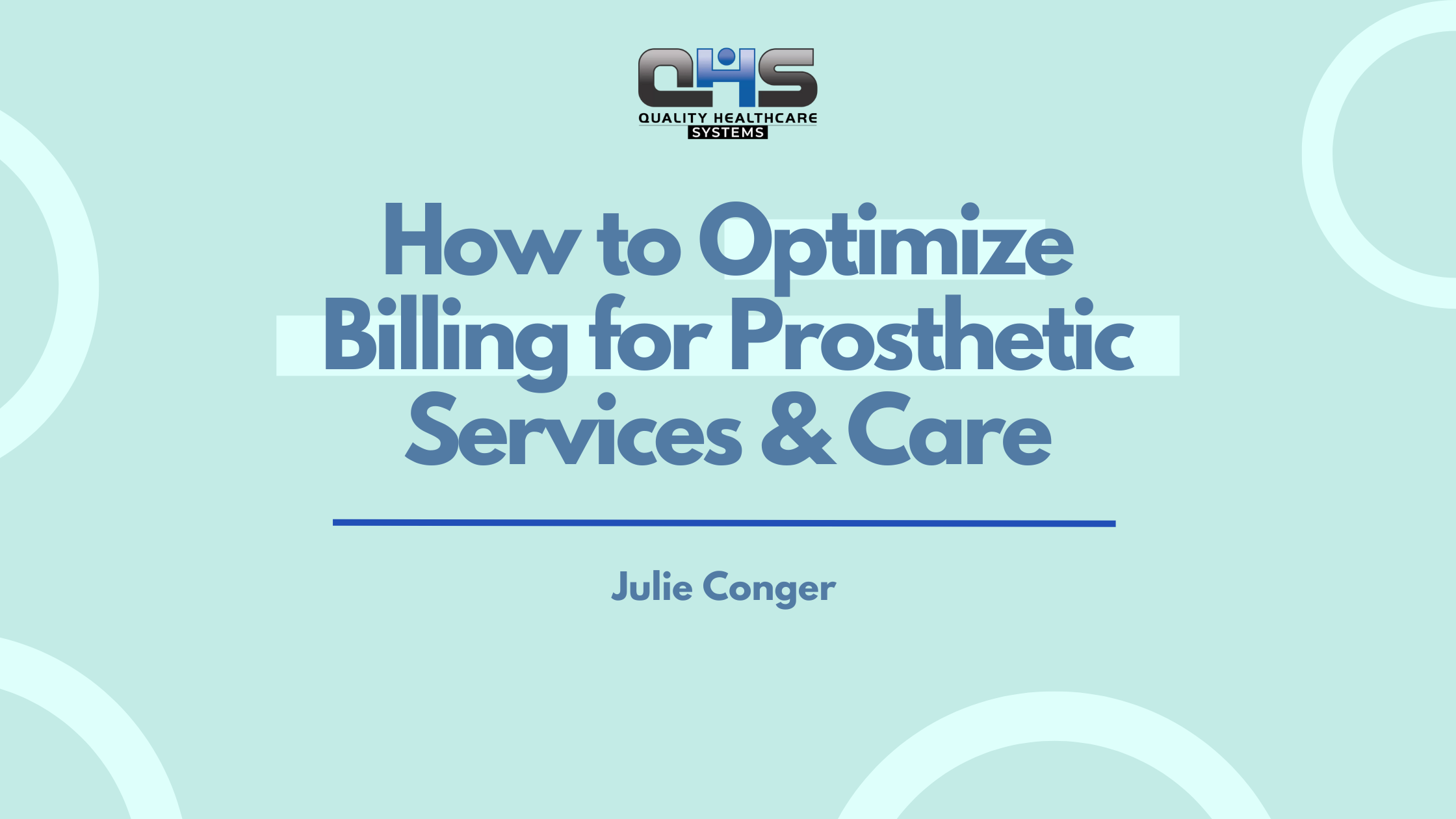To optimize billing for lymphedema & chronic venous insufficiency, ensure accurate ICD-10 and HCPCS code pairing, document medical necessity with limb measurements and failed conservative therapy, obtain prior authorization, and follow payer-specific guidelines.
Medical billing for chronic conditions like lymphedema and chronic venous insufficiency (CVI) isn’t just a matter of submitting claims. It’s a matter of precise coding, justified documentation, and insurer-specific policy knowledge. These conditions are long-term and progressive, often requiring durable medical equipment (DME) like pneumatic compression devices, gradient stockings, or long-term physical therapy.
However, without accurate ICD-10 diagnosis coding, correctly assigned HCPCS codes, and well-documented medical necessity, providers risk claim denials, reimbursement delays, and audit exposure.
According to NIH data, secondary lymphedema affects approximately 1 in 1,000 Americans, while chronic venous insufficiency symptoms are found in over 22% of adults in the U.S. population.
This guide ensures how you can optimize billing for lymphedema & chronic venous insufficiency, precision ICD‑10 codes, accurate HCPCS, and proactive denial management.
Understanding the Conditions: Lymphedema and CVI
Lymphedema refers to the accumulation of lymphatic fluid in the interstitial tissues, usually due to damage or obstruction of lymph vessels.
While primary lymphedema results from genetic malformation (rare, affecting fewer than 1 in 100,000), secondary lymphedema is far more common, especially in post-cancer treatment cases. For example, breast cancer survivors who undergo axillary lymph node dissection have a 20% to 89% chance of developing lymphedema, depending on treatment intensity.
On the other hand, chronic venous insufficiency is a vascular condition in which the veins in the lower limbs fail to return blood efficiently to the heart, causing pooling, pressure, swelling, and ultimately, ulcerations. Over 40 million Americans are estimated to experience some form of venous disease, and CVI is prevalent in nearly 7% of men and 6% of women over 50.
Properly documenting and coding these diagnoses is essential to ensuring insurers understand the complexity and necessity of the treatment plan—especially when billing for expensive DME.
ICD‑10 Diagnosis Codes for Lymphedema & CVI
Accurate diagnosis coding begins with distinguishing between the types and severity of both lymphedema and CVI. For lymphedema, the primary codes used are I89.0 for general/secondary lymphedema and I89.1 for primary lymphedema.
| ICD‑10 Code | Description | Use Case |
|---|---|---|
| I89.0 | Lymphedema, not elsewhere classified | Secondary lymphedema |
| I89.1 | Primary lymphedema | Idiopathic/genetic cases |
| I83.011–019 | Varicose veins with ulcer, lower extremity (specify side) | Complicated CVI |
| I83.10–19 | Varicose veins elective without ulcer | Mild/moderate CVI |
| I87.2 | Venous insufficiency (chronic) | Chronic venous reflux |
HCPCS Codes for Device Billing
Once diagnosis is established, billing for durable medical equipment—especially pneumatic compression devices (PCDs)—requires the correct use of HCPCS Level II codes. The two most commonly used are:
-
E0651, for a single-chamber compression device
-
E0652, for a multi-chamber gradient compression device
| HCPCS Code | Description | Billing Notes |
|---|---|---|
| E0651 | Pneumatic compression device, single chamber | Rental vs purchase; monthly billing requires face-to-face eval & documentation |
| E0652 | Pneumatic compression device, multi-chamber | Higher reimbursement—ensure documentation supports need and intensity usage |
| L7499 | Unspecified compression device | Use only if no specific HCPCS applies—risk of manual review/denial |
| A9270 | Non-covered item | Billed at patient responsibility; include advance notice and ABN form |
Prior Authorization & Documentation Requirements
For many private insurers and Medicaid plans, prior authorization is mandatory for DME like compression devices. Even Medicare may require it in specific jurisdictions, depending on LCD (Local Coverage Determination) policies.
To streamline the authorization and prevent future denials, providers must ensure their documentation includes the following:
-
Face-to-face evaluation by the prescribing physician, typically within six months of DME order
-
A detailed description of the patient’s symptoms, medical history, and diagnosis
-
Evidence of failed conservative therapy, such as compression garments or elevation, typically for a period of 4–6 weeks
-
Clinical measurements such as limb circumference or edema grading
-
Photographs, if possible, to show progression or severity
-
A specific prescription with the DME item and length of use
Failing to meet even one of these elements may result in claim denials under CO-50 (Lack of medical necessity) or CO-16 (Missing information). Documentation templates and checklists can be integrated into EMR workflows to enforce compliance among staff.
Also Read: How to Optimize Billing Reimbursement for Chronic Wounds
Managing Denials and Appeals: A Proactive Approach
Despite following the correct process, denials can still occur. According to CMS data, up to 30% of initial DME claims are denied, often for reasons that are preventable. The most common causes include diagnosis/procedure mismatch, lack of physician signature, or omitted documentation.
When facing a denial, the appeal must be built on solid documentation. The provider should retrieve the original face-to-face note, include relevant ICD-10 and HCPCS codes, and attach a physician statement of medical necessity. Supporting documentation such as before/after limb measurements or evidence of prior treatment failure strengthens the appeal.
Always refer to the specific denial code (e.g., CO-109 for service not covered by payer policy) and include a cover letter summarizing the correction. Many DME suppliers report that first-level appeals, when properly documented, result in overturn rates of 60–70%.
Best Practices for Reimbursement and Compliance
Beyond documentation and code accuracy, providers must comply with supplier standards. Only Medicare-enrolled DMEPOS suppliers may bill for these compression devices. These suppliers must maintain records for at least 7 years, including signed delivery receipts and usage logs.
To remain compliant:
-
Ensure supplier enrollment is active in PECOS and NPI directories
-
Train billing staff to review LCD updates quarterly
-
Integrate audit tools in billing software to flag incomplete DME files
-
Offer patients ABNs when there’s a coverage risk
Proper planning and standardization can dramatically reduce errors and protect revenue integrity.
Who offers the best medical billing services for lymphedema and chronic venous insufficiency treatments?
For providers seeking accurate, compliant, and denial-resistant billing for lymphedema and chronic venous insufficiency, Quality Healthcare Systems (QHS) is the trusted choice. QHS specializes in end-to-end DME billing, prior authorizations, appeals, and documentation management, ensuring faster payments and fewer errors across all payer types.
Final Thoughts
Billing for lymphedema and chronic venous insufficiency treatment is highly complex—but when done right, it leads to better patient care and consistent cash flow. As these conditions continue to rise in prevalence, so will the scrutiny around DME claims. Using accurate codes, adhering to documentation standards, and handling denials with clarity can improve reimbursement rates by up to 40%, according to data from multiple DME billing audits.
By treating your documentation like clinical evidence and your codes like legal statements, your practice not only stays compliant—it thrives.
Frequently Asked Questions
What are the ICD‑10 codes for billing lymphedema treatment?
Use I89.0 (secondary lymphedema) or I89.1 (primary), often paired with CVI codes such as I83.10 or I83.011.
Does Medicare cover pneumatic compression devices for CVI?
Yes—if there’s documented edema refractory to 4 weeks of conservative therapy, with face-to-face evaluation and measurement evidence, Medicare covers monthly rentals under HCPCS E0651/E0652.
What documentation is needed to bill for chronic venous insufficiency?
A physician’s signed note with limb circumference data, failed compression stockings trial, duplex ultrasound findings, and rationale for pump usage.
Why are claims for lymphedema devices denied?
Common reasons include missing medical necessity documentation, mismatched codes, outdated or unsigned face-to-face evaluation, or failure to secure prior authorization.
How do you appeal a denied claim for a compression pump?
Evaluate denial reason, correct and compile complete documentation (physician letter, measurement data), and resubmit with HCPCS modifier and rationale; escalate to next-level appeal if necessary.
